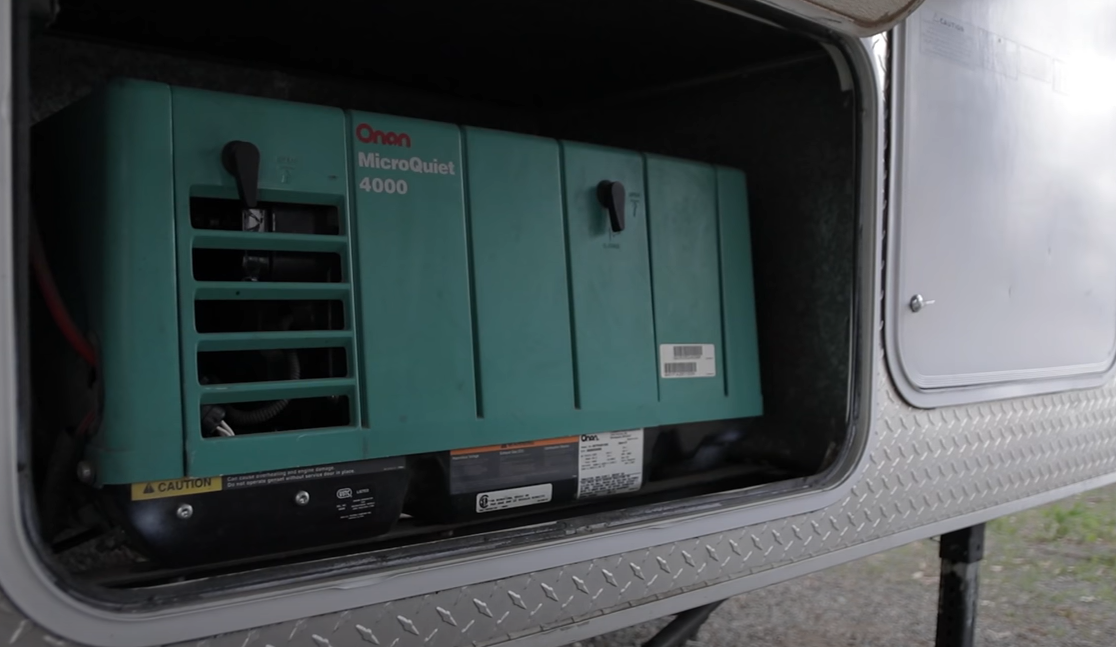
Setting up a power source for your RV is essential for a comfortable off-grid experience. Without a reliable power source, you won’t be able to use your appliances, charge your devices, or even turn on the lights. In this article, we’ll discuss how to set up a power source for your RV.
Determine your power needs
The first step in setting up a power source for your RV is to determine your power needs. Calculate the total wattage of all the appliances and devices you plan to use, and add them up to get your total power consumption.
This will help you choose the right size of power source for your RV. You can use a generator, a solar power system, or a battery bank to power your RV, depending on your needs and budget.
Choose a generator
If you’re looking for a simple and reliable power source for your RV, a generator is a good option. Generators come in various sizes and types, and you can choose one that suits your needs.
Portable generators are popular among RVers because they can be easily transported and used in different locations. They run on gasoline, propane, or diesel fuel and can provide enough power to run your RV’s appliances and devices.
When choosing a generator, consider its size, fuel efficiency, noise level, and maintenance requirements. You should also check the generator’s output capacity and make sure it’s enough to power all your appliances and devices.
Install a solar power system
If you’re looking for a more sustainable and eco-friendly power source for your RV, a solar power system is a good choice. A solar power system consists of solar panels, a charge controller, and a battery bank.
Solar panels are installed on the roof of your RV and collect energy from the sun. The charge controller regulates the amount of energy that flows into the battery bank, while the battery bank stores the energy and powers your RV’s appliances and devices.
To install a solar power system, you need to first choose the right size of solar panels and battery bank for your RV. You also need to install the charge controller and wiring, and connect the system to your RV’s electrical system.
Use a battery bank
A battery bank is an essential component of any off-grid power system. It stores the energy generated by your generator or solar panels and provides power to your RV’s appliances and devices when needed.
You can choose from various types of batteries for your RV, such as lead-acid batteries or lithium-ion batteries. Lithium-ion batteries are becoming more popular among RVers because they are lightweight, compact, and have a longer lifespan compared to lead-acid batteries.
When choosing a battery bank, consider its capacity, voltage, and discharge rate. You should also check its maintenance requirements and make sure it’s compatible with your power source and electrical system.
Connect your power source to your RV
Once you’ve chosen your power source, you need to connect it to your RV’s electrical system. This involves installing a power inverter, which converts DC power from your battery bank or generator into AC power that can be used by your appliances and devices.
You also need to install a breaker panel and circuit breakers to protect your RV’s electrical system from overloading. Make sure to follow the manufacturer’s instructions and safety guidelines when installing and connecting your power source to your RV.
Connect the Solar Charge Controller to the Battery
The solar charge controller is a device that regulates the power flow from the solar panels to the battery, ensuring that the battery is not overcharged or undercharged. It is important to connect the charge controller properly to the battery. Usually, the charge controller comes with a user manual that provides detailed instructions on how to connect it to the battery.
Install an Inverter
An inverter is an essential component that converts DC power from the battery into AC power, which is used to power the RV’s electrical appliances. When choosing an inverter, it is important to consider the wattage requirements of your appliances to ensure that the inverter can provide enough power. The inverter should be installed in a dry and well-ventilated area, preferably near the battery bank.
Test the System
Once you have completed the installation of the power system, it is important to test it to ensure that it is working properly. This involves checking the battery voltage, the solar panel output, and the performance of the inverter. You should also test the system with various appliances to ensure that it can handle the load.
Maintenance and Upgrades
Proper maintenance of the power system is essential to ensure that it continues to function optimally. This involves checking the battery and solar panel connections regularly, cleaning the solar panels, and ensuring that the inverter is functioning properly. You should also consider upgrading the system as your power needs increase, such as adding more solar panels or increasing the battery bank size.
Setting up a power source for your RV is essential for off-grid living. Solar power systems are a popular choice due to their reliability, efficiency, and eco-friendliness. When setting up a solar power system, it is important to consider the size of the system, the type of batteries, the inverter, and the charge controller. By following the above steps, you can set up a reliable and efficient power system for your RV and enjoy the freedom of off-grid living.